Unleash the power of chords and transform your piano playing! Dive into the world of piano chords with our comprehensive cheat sheet, designed to empower you with the knowledge and skills to elevate your musical journey. Whether you’re a seasoned pianist or just starting to explore the enchanting world of chords, this cheat sheet will be your constant companion, providing you with a wealth of information and practical guidance.
From basic chord construction to advanced chord theory, this cheat sheet covers everything you need to know about chords. It’s like having a personal tutor at your fingertips, guiding you through the intricacies of chord progressions, variations, and substitutions. Get ready to unlock your musical potential and take your piano playing to new heights with our piano chord cheat sheet.
Chord Cheat Sheet Design
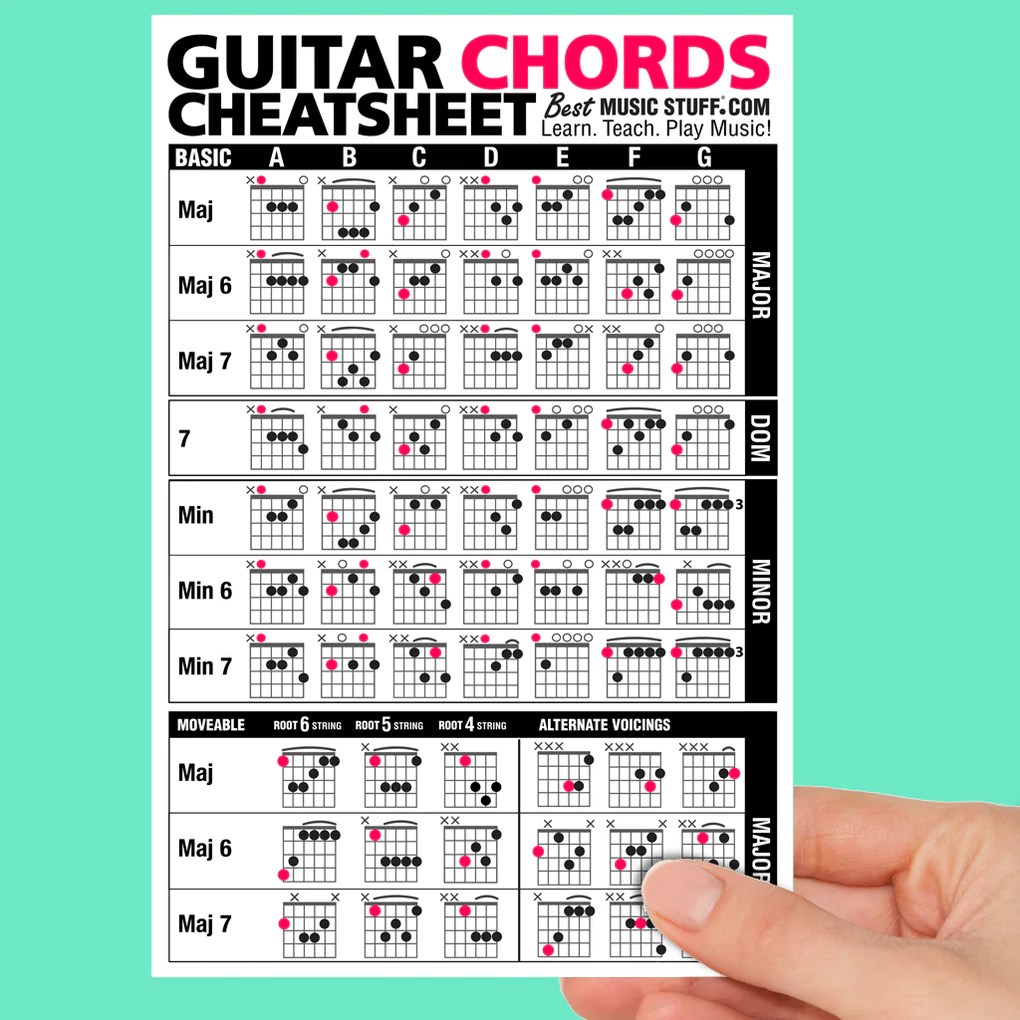
A comprehensive piano chord cheat sheet is a valuable resource for musicians of all levels, providing quick and easy access to essential chord voicings.
An effective chord cheat sheet should be organized logically, with chords grouped by key or category, such as major, minor, and seventh chords. Each chord should be clearly labeled with its name and corresponding fingerings, and include concise instructions for playing the chord correctly.
Table Format
One popular format for a chord cheat sheet is a table, with columns for the chord name, fingering, and key. This format allows for easy comparison of different chords and their fingerings, and can be particularly helpful for beginners who are still learning the basics of piano playing.
Chord Variations and Inversions
Expanding your chordal vocabulary beyond basic major and minor triads opens up a world of sonic possibilities. Chord variations, such as inversions and extended chords, add depth, color, and harmonic intrigue to your music.
Inversions involve rearranging the notes of a chord to create different voicings. For instance, a C major triad (C-E-G) can be inverted to form a C/E (E-G-C) or a C/G (G-C-E). These inversions alter the chord’s sound, making it brighter (C/E) or darker (C/G).
Extended chords add additional notes beyond the basic triad, such as the 7th, 9th, or 11th. These extended chords create more complex and sophisticated harmonies. For example, a Cmaj7 (C-E-G-B) adds a 7th interval, giving it a more resolved and satisfying sound.
Using Chord Variations Effectively
- Inversions: Inversions can be used to create smooth voice leading, avoid awkward voice crossings, or emphasize specific notes in a chord.
- Extended chords: Extended chords can add depth and complexity to your harmonies, making them more interesting and engaging for the listener.
- Combining variations: Don’t be afraid to combine inversions and extended chords to create even more unique and expressive voicings.
Chord Progression Analysis
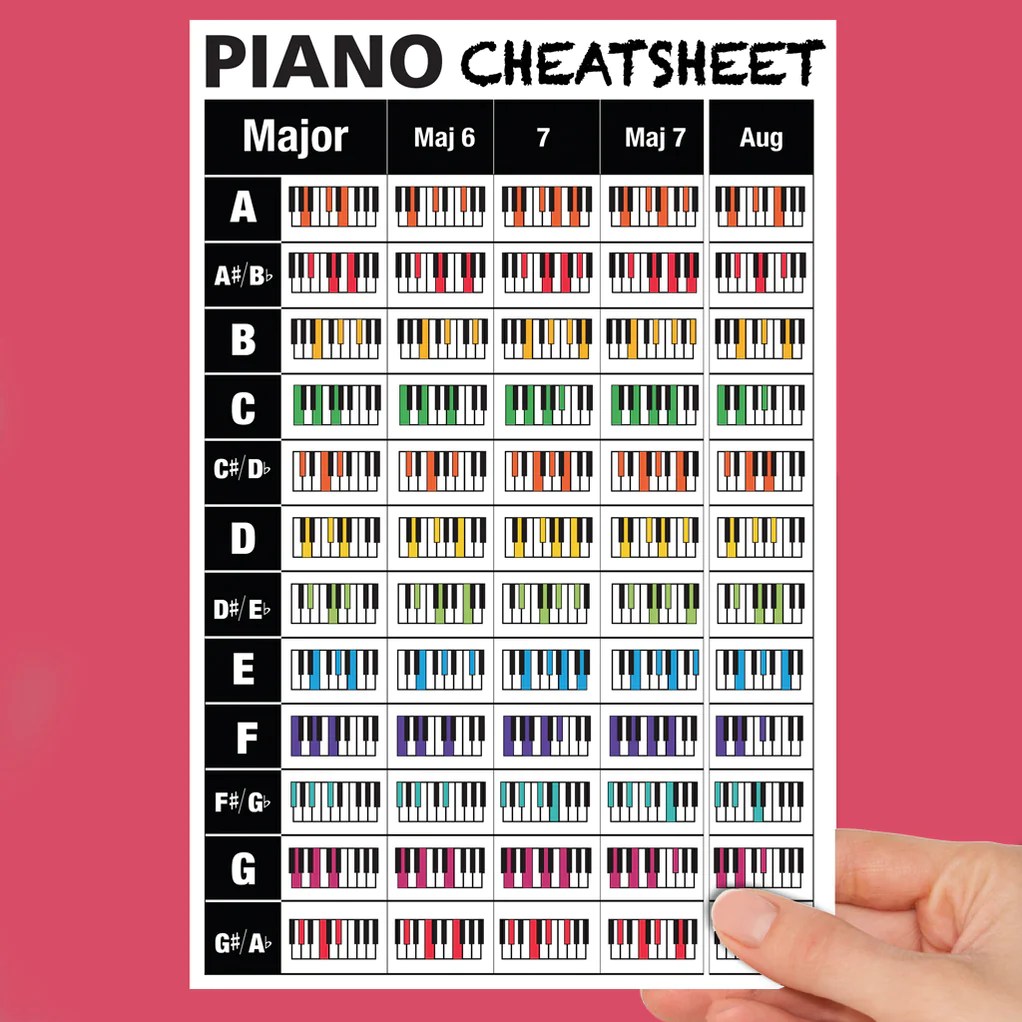
Chord progression analysis involves examining the sequence of chords in a musical piece to understand how they create harmony, movement, and resolution. It helps identify the underlying harmonic structure and the composer’s intent in shaping the musical flow.By analyzing the root chords, harmonic functions (e.g.,
tonic, dominant, subdominant), and cadences (e.g., perfect authentic cadence, imperfect authentic cadence), we can discern the tonal center and how the chords interact to create a sense of tension and release.
Identifying Root Chords and Harmonic Functions
The root chord is the chord built on the root note of a scale. Harmonic functions describe the role of chords within a progression, such as tonic (stability), dominant (tension), and subdominant (movement).For example, in the key of C major, the C major chord is the tonic, G major is the dominant, and F major is the subdominant.
Understanding Cadences
Cadences are chord progressions that provide a sense of closure or resolution. A perfect authentic cadence (PAC) consists of a V-I progression (e.g., G major to C major in the key of C major), while an imperfect authentic cadence (IAC) uses a IV-I progression (e.g.,
F major to C major).These cadences create a strong sense of resolution and often mark the end of a musical phrase or section.
Chord Substitution Techniques
Chord substitution is a technique used in music to replace one chord with another that has a similar harmonic function. This can be done to create variety, enhance harmonic interest, or to resolve dissonance.There are two main types of chord substitution:
- Parallel motion: This involves moving all of the notes in a chord up or down by the same interval. For example, you could substitute a C major chord with an A minor chord by moving all of the notes in the C major chord down by three half steps.
- Chromatic mediants: This involves substituting a chord with another chord that is a chromatic mediant. Chromatic mediants are chords that are separated by one half step. For example, you could substitute a C major chord with a C# major chord.
Chord substitutions can be a powerful tool for enhancing the harmonic interest of your music. However, it is important to use them sparingly and with care. Too many chord substitutions can make your music sound disjointed and confusing.Here are some tips for using chord substitutions:
- Start by substituting chords that have similar harmonic functions. For example, you could substitute a major chord with a minor chord, or a dominant chord with a half-diminished chord.
- Use chord substitutions to create tension and release. For example, you could substitute a dissonant chord with a consonant chord to create a sense of resolution.
- Don’t be afraid to experiment with different chord substitutions. The more you experiment, the better you will become at using them effectively.
Chord Voicings and Arrangements
Chord voicings refer to the specific arrangement of notes within a chord. By altering the order and spacing of notes, you can create different textures and characters for the same chord.
For example, a C major chord can be voiced in various ways, such as:
- Root position: C (root), E (3rd), G (5th)
- First inversion: E (3rd), G (5th), C (root)
- Second inversion: G (5th), C (root), E (3rd)
The root position presents the chord in its fundamental form, while the inversions highlight different intervals within the chord.
Voicing can also affect the complexity and lushness of a chord arrangement. By adding extensions (such as 7ths, 9ths, or 11ths) and altering the intervals between notes, you can create rich and sophisticated chord voicings.
Techniques for Creating Lush and Complex Chord Arrangements
- Use extended chords (7ths, 9ths, 11ths, etc.) to add depth and complexity.
- Incorporate suspensions (temporarily delaying a chord tone) to create tension and release.
- Experiment with different voicings and inversions to find the most effective arrangement for your desired sound.
- Consider the harmonic context and the overall progression when choosing chord voicings to ensure a cohesive flow.
Improvisation with Chords
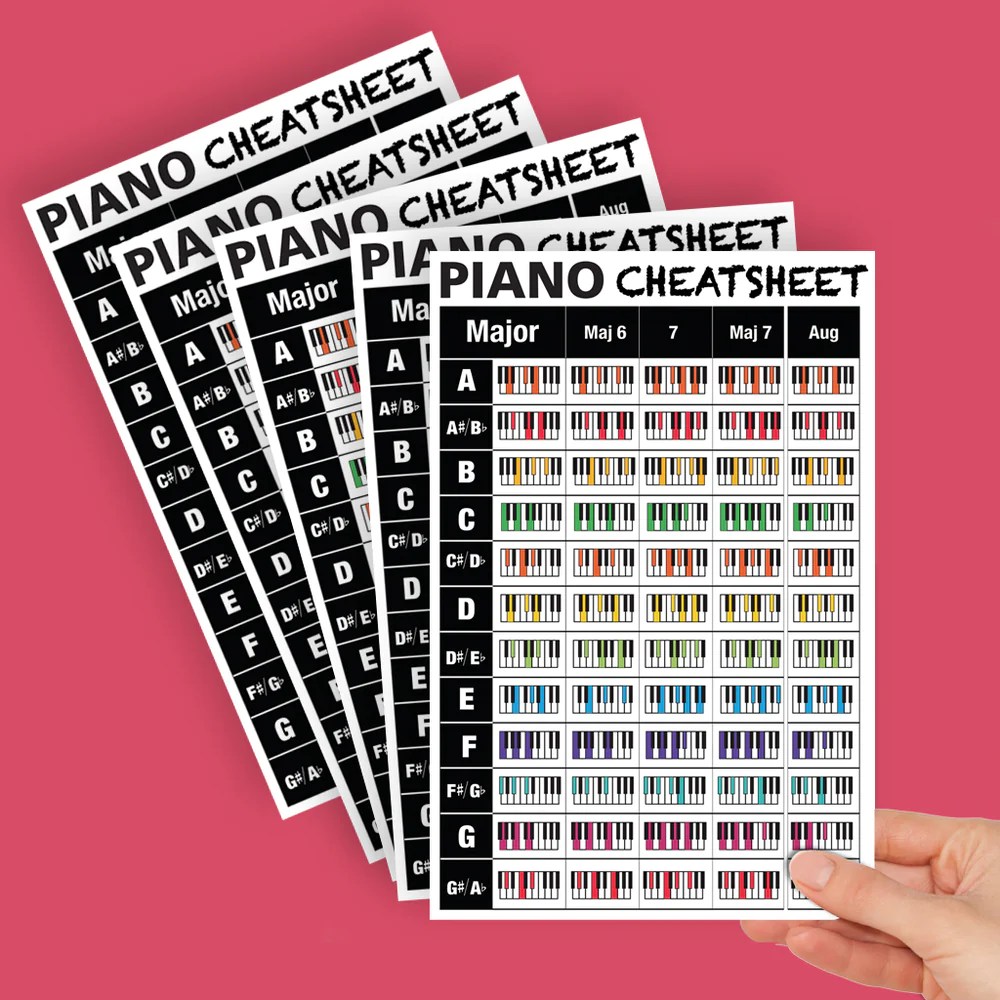
Unlock the freedom of musical expression through improvisation! Improvising over chord progressions is an art form that allows you to create spontaneous and captivating melodies. Dive into this guide to master the techniques and develop your own unique improvisational style.
The key to successful improvisation lies in understanding the underlying chord structure. Chord tones, arpeggios, and scales serve as the building blocks for melodic lines that complement the harmony.
Using Chord Tones
- Chord tones are the notes that make up the chord, providing a solid foundation for improvisation.
- Experiment with playing the root, third, fifth, and seventh notes of the chord to create melodic contours that align with the harmony.
Incorporating Arpeggios
- Arpeggios are the individual notes of a chord played in sequence.
- Use arpeggios to create flowing melodies that add movement and interest to your improvisations.
- Try playing arpeggios in different inversions and rhythmic patterns to create diverse melodic lines.
Exploring Scales
- Scales provide a wider range of notes to choose from for improvisation.
- Select scales that complement the chord progression, such as the major scale for major chords and the minor scale for minor chords.
- Use scales to create melodic lines that move smoothly between chords, creating a sense of continuity.
Developing Your Style
- Experiment with different techniques and combinations to find what resonates with you.
- Listen to recordings of great improvisers to learn from their approaches and techniques.
- Practice regularly to develop your dexterity and musical intuition.
Chord Recognition and Ear Training
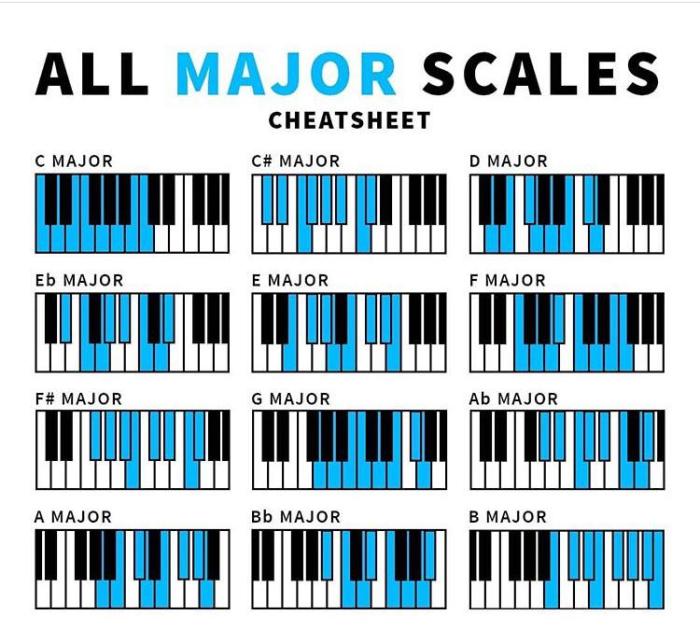
Developing strong chord recognition skills is crucial for musicians. It allows you to quickly identify chords by ear, transcribe them to notation, and enhance your musical memory. Here are some exercises and tips to improve your chord recognition abilities:
Exercises for Chord Recognition
- Listen to chord progressions and try to identify the chords by ear.
- Play a chord and have someone else name it.
- Use a chord recognition app or website to practice identifying chords.
Developing a Strong Musical Memory
- Practice listening to music attentively and focus on identifying the chords.
- Transcribe chord progressions from songs you enjoy.
- Use mnemonic devices or mental associations to help you remember chords.
- Regularly review and practice the chords you’ve learned to strengthen your memory.
Chord Theory for Beginners
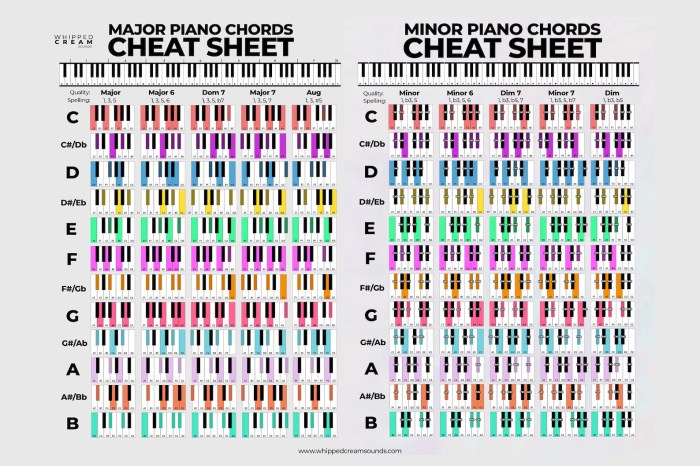
Chord theory is the study of chords, which are groups of notes played together. Chords are essential to music, as they provide harmony and structure.To understand chord theory, it is important to first understand intervals and scales. An interval is the distance between two notes.
A scale is a series of notes arranged in ascending or descending order. Chords are built by stacking intervals on top of each other.The most basic chord is the triad, which is made up of three notes. The root of a chord is the lowest note.
The third is the note that is three half steps above the root. The fifth is the note that is five half steps above the root.There are many different types of chords, each with its own unique sound. Some of the most common chords include major chords, minor chords, and seventh chords.Chords
are used in a variety of ways in music. They can be used to create harmony, provide structure, and add color to a song.
Advanced Chord Theory
Advanced chord theory delves into complex and sophisticated concepts that extend beyond basic triad chords. It encompasses extended chords, polychords, and modal harmony, offering musicians a vast sonic palette to explore.
Extended Chords
Extended chords add additional notes beyond the root, third, and fifth, creating richer and more complex harmonies. Common extended chords include seventh chords (adding a seventh), ninth chords (adding a ninth), and eleventh chords (adding an eleventh). These extended notes can alter the mood and character of a chord, adding tension, resolution, or a sense of spaciousness.
Polychords
Polychords are a type of chord that combines two or more distinct chords simultaneously. They create a unique and layered sound that can evoke a sense of dissonance or complexity. Polychords are often used in jazz, contemporary classical music, and film scores.
Modal Harmony
Modal harmony is a system of organizing chords based on different scales, rather than the traditional major and minor scales. Each mode has its own unique set of chords, creating a distinct sound and emotional atmosphere. Modal harmony is commonly used in folk, jazz, and world music.
Chord Resources and References

If you’re eager to delve deeper into the world of piano chords, here are some invaluable resources to assist you:
Recommended Books
“The Chord Bible” by David Oakes
An extensive collection of over 1,000 chords with detailed fingerings and inversions.
“Chord Progressions for Songwriters” by Russ Miller
A practical guide to crafting captivating chord progressions.
“Jazz Piano Chords” by Barry Harris
An essential resource for jazz pianists, covering advanced chord voicings and harmonic analysis.
Online Resources
Chord Dictionary (https
//www.chorddictionary.com/): A comprehensive online database of chords, including inversions and variations.
Chord Generator (https
//www.hooktheory.com/chord-generator): A tool that generates chords based on your input parameters.
Music Theory (https
//www.musictheory.net/): A comprehensive website covering all aspects of music theory, including a section on chords.
Apps
iReal Pro
A popular app for musicians, providing a vast library of chord charts, backing tracks, and practice tools.
Ultimate Guitar
An app with a massive collection of songs and chords, including interactive tutorials and chord diagrams.
Yousician
An interactive app that offers personalized lessons on chords, scales, and other music theory concepts.
Staying Up-to-Date
Follow music theory blogs and forums
Engage with online communities to stay informed about the latest developments in chord theory and practice.
Attend workshops and masterclasses
Seek opportunities to learn from experienced musicians and educators.
Practice regularly
The key to mastering chords is consistent practice. Dedicate time each day to explore different chords and progressions.By utilizing these resources and dedicating yourself to practice, you can expand your chord knowledge and elevate your piano playing skills to new heights.
Last Word
As you delve deeper into the world of piano chords, remember that practice is the key to mastery. Experiment with different chords, explore their variations, and incorporate them into your playing. With dedication and a touch of creativity, you’ll soon be crafting beautiful melodies and captivating harmonies that will leave your audience spellbound.
Embrace the journey, enjoy the process, and let the music flow through your fingers.
Questions and Answers
What is a piano chord cheat sheet?
A piano chord cheat sheet is a comprehensive resource that provides pianists with a quick and easy reference to various piano chords, their fingerings, and their uses. It’s like a roadmap for navigating the world of chords, helping you find the right chords for your songs and compositions.
How can I use a piano chord cheat sheet?
Using a piano chord cheat sheet is simple! Simply refer to the cheat sheet when you need to find the fingering for a particular chord. It’s a great way to learn new chords, refresh your memory, or quickly find the right chord for a song you’re playing.
What are some tips for learning piano chords?
Here are a few tips for learning piano chords:
- Start with the basic chords and gradually work your way up to more complex ones.
- Practice regularly and consistently to improve your muscle memory.
- Use a metronome to help you keep a steady rhythm.
- Listen to music and try to identify the chords that are being played.
What are some common mistakes to avoid when playing piano chords?
Here are a few common mistakes to avoid when playing piano chords: